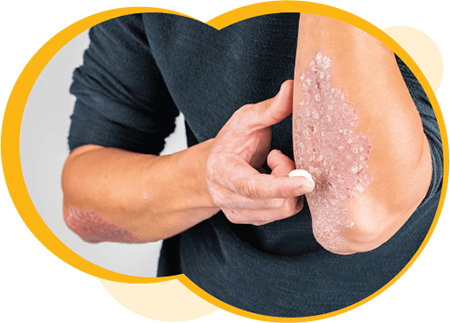Medication
 Arthritis medications are designed to control the disease, slow its progression, help manage pain, and improve physical function and quality of life. There is a wide range of options—with new medications being developed and tested in clinical trials. Understanding all possible treatments is not easy.
Arthritis medications are designed to control the disease, slow its progression, help manage pain, and improve physical function and quality of life. There is a wide range of options—with new medications being developed and tested in clinical trials. Understanding all possible treatments is not easy.
These medications can be very complex, so if you are not sure how your medication works or have more questions don’t be afraid to ask! Your healthcare team wants to make sure you understand how your medication works, and that you feel comfortable taking it. Pharmacists are also a great resource for any questions you may have about your medications or to help clarify how to take your medication.
Common medications used to treat symptoms of psoriatic arthritis:
Arthritis Society Canada has developed a comprehensive expert guide that explains detailed information about medications used to treat psoriatic arthritis and other types of arthritis.
Arthritis Medications – A Reference GuideSkin care
Properly caring for your skin will help you manage your symptoms. If you have severe psoriasis, you should also see a skin doctor (dermatologist) who can help you with a treatment plan to care for your skin.
Many types of psoriasis benefit from exposure to moderate amounts of sunlight, however some types of psoriasis may be worsened by sun exposure. It is important to talk with your doctor or dermatologist about how sun exposure may affect you. They will also be able to guide you on how to avoid sunburns.
Corticosteroids
 A dermatologist (skin doctor) may also try other forms of treatment to help manage skin plaques or scales while waiting for DMARDs or other combination therapies to start working. These treatments may include corticosteroids.
A dermatologist (skin doctor) may also try other forms of treatment to help manage skin plaques or scales while waiting for DMARDs or other combination therapies to start working. These treatments may include corticosteroids.
Corticosteroids can be applied in a topical format (creams, gels, or ointments) directly to the affected area of skin. A corticosteroid can help reduce inflammation, alleviate itchiness, slow the hyper-production of skin cells causing plaques, and help skin to shed to prevent scale build up.
There are different strengths and classes of corticosteroids that can be used to help treat symptoms of psoriasis. Due to potential side effects, it is important to not use them more often than directed by your doctor, and to only use on the areas prescribed. Different strengths and concentrations of corticosteroids can cause negative side effects in some areas of the body including acne, skin thinning, skin tearing and bruising, among others.
Surgery
Surgery is something that you and your doctor may consider if one of your joints becomes badly damaged and is no longer functioning. Some people with severe, advanced psoriatic arthritis who have not responded to conservative pain management for their damaged joints may benefit from surgery. Benefits include less pain and better movement and function. It is important to remember that surgery is not a treatment for the inflammation of psoriatic arthritis.

Discover More

This information was last updated January 2024, with expert advice from:
Vinod Chandran, MB BS MD DM PhD
Associate Professor of Medicine, Division of Rheumatology, University of Toronto
Staff Physician, Division of Rheumatology, University Health Network